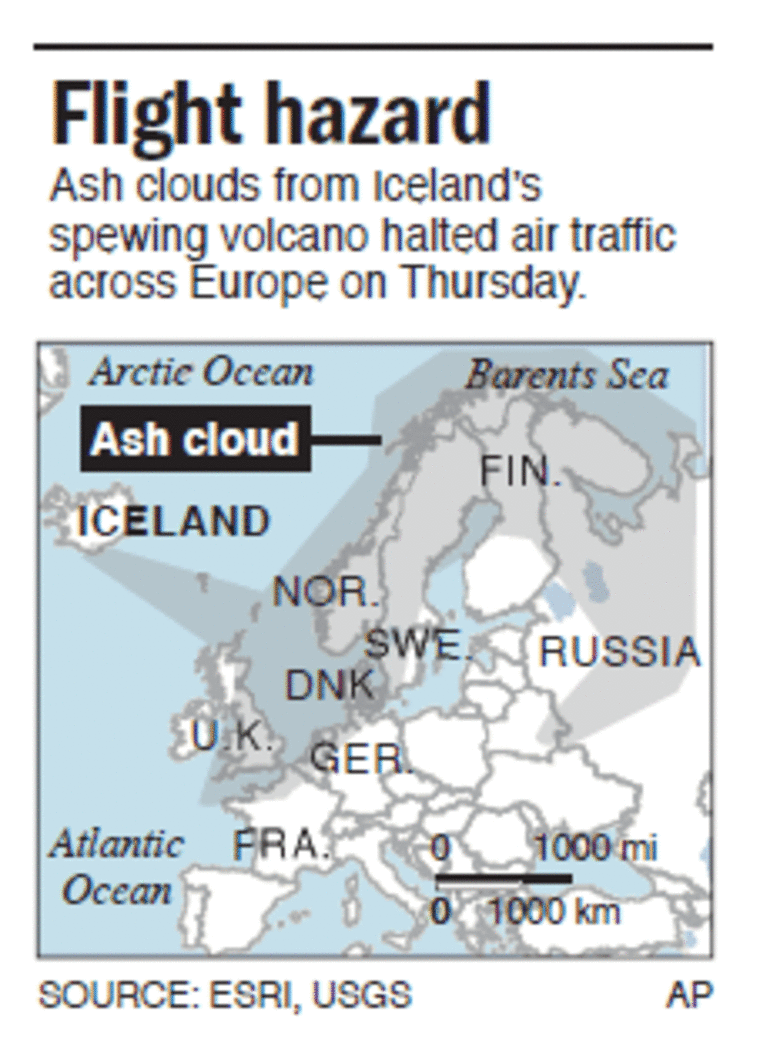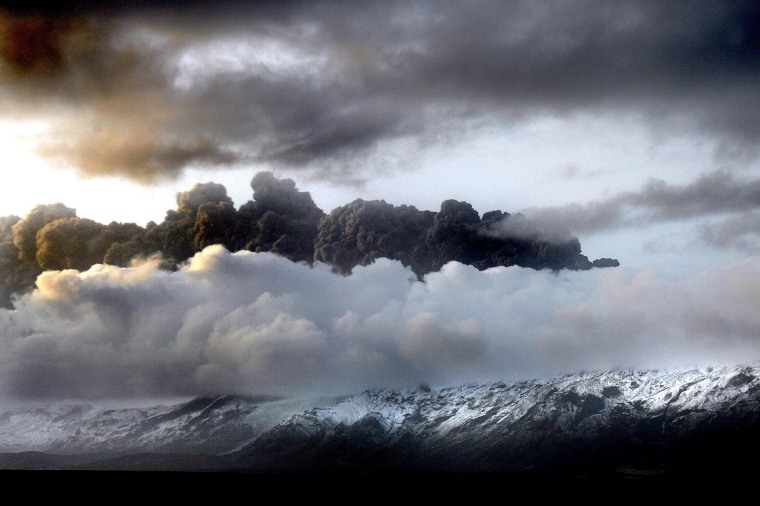If Iceland's active volcano gets even more active, Icelanders and air travelers won't be the only ones impacted. Gases from past large volcanoes have actually lowered Earth's temperatures, triggered lung ailments, caused acid rain and thinned our protective ozone layer.
The Eyjafjallajokull volcano isn't there yet. "This is not like Pinatubo. So far the scale is not big enough to have a global effect," Hans Olav Hygen, a climate researcher at the Norwegian Meteorological Institute, said in reference to the 1991 eruption in the Philippines.
But the potential is there. The new eruption is 10 times more powerful than another nearby last month, threw up a cloud of ash nearly seven miles high and closed down air traffic across northern Europe.
The most dangerous gases released during an eruption are sulfur dioxide, carbon dioxide and hydrogen fluoride.
High levels of ash particles can cause increased coughing and irritate the eyes and skin and sometimes result in serious lung conditions.

When the acid coating on ash is removed by rain, it can pollute local water supplies and damage vegetation. On the other hand, ash deposits can be beneficial by improving the fertility of soil.
Already in Iceland, residents and visitors are being urged to stay indoors due to the ash fall and to wear dust masks if they must venture outside. Moreover, farmers are worried that their livestock will eat and digest ash, causing a die-off like the one in 1918 when another Icelandic volcano erupted.
Three previous eruptions of Eyjafjallajokull are known in the 1,100 years of Iceland's recorded history. The most recent began in December 1821 and lasted for more than a year, then a neighboring volcano erupted in 1823. Other eruptions include one around 1612 and 920.
Longer term, sulfur from volcanoes has the potential to cool the Earth. Sulfur reacts with water in the air to form sulfuric acid droplets that reflect sunlight hitting Earth, thus blocking some rays. The reduction in sunlight can reduce temperatures for a year or so, until the droplets fall out of the atmosphere.
Indeed, Pinatubo is known to have cooled the planet by 0.9 degrees Fahrenheit.
Some experts advocate the deliberate injection of sulfur dioxide in the stratosphere in a "geoengineering" short cut to slow global warming.
That option has become attractive for some after a U.N. climate summit in Copenhagen in December failed to produce a binding global deal to cut emissions of greenhouse gases. Others say the risks are too big — ranging from disruptions of weather patterns to acid rain.
Other examples of how the environmental impacts of volcanoes can go far beyond their immediate area:
- In 1783, a poison cloud from the eruption of Iceland's Laki volcano killed thousands of people across Europe and undermined farm output by spewing an estimated 120 million tons of sulfur dioxide into the air, said Colin Macpherson, a geologist at the University of Durham in England. That amount of sulfur dioxide was three times European industrial output in 2006.
- In 1815, the Tambora volcano eruption in Indonesia killed an estimated 92,000 people, and its ashes swept all the way to Europe, blanketing the continent and turning 1816 into a "year without summer."
- In 1883, Krakatoa erupted in Indonesia killing 36,000 and created vivid red twilights in Europe from November 1883 through February 1884 — a fact reflected by painters of the period.
- The 1980 Mount St. Helens volcano eruption in Washington state, in which 57 people died, created a cloud of ash 2,500 miles long and 1,000 miles wide.
